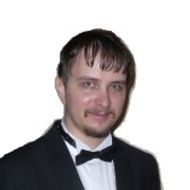Neural Networks of Power: AI Unravels Knots and Tangles in Relationships between Humans, Elves and Hobbits

One of the most popular writers of the last century, John Ronald Reuel Tolkien, was born on January 3rd. Researchers from HSE University, AIRI and MISSIS have used machine learning to explore the social connections between the characters of his Middle-earth universe. The algorithm managed to create an accurate picture of the social structures and dynamics of the characters' relationships, providing a unique map of interactions in the epic world. The researchers believe that this approach can be applied in many areas beyond literature. The results of the work were published in IEEE Xplore.
The analysis of literary works is a complex and time-consuming process. When reading any text, the researcher needs to capture numerous nuances and features — from the author's style and word choice to the relationships between characters and their role in the plot. Most often, this work is done manually by literary critics. Ilya Makarov, Senior Research Fellow at the School of Data Analysis and Artificial Intelligence at the HSE Faculty of Computer Science, head of the ‘AI in Industry’ group at the Artificial Intelligence Research Institute (AIRI), and Anastasia Yaschenko, HSE University graduate, applied computational linguistics and machine learning tools to a series of books by John Ronald Reuel Tolkien about Middle-earth. The AI ‘read’ the books, isolating the key elements: the characters, their belonging to a particular race and their social ties. It demonstrated the results in the form of a graph, which allows us to not only trace the relationship between the characters, but also to see more clearly the structure of their social network.

Senior Research Fellow at the School of Data Analysis and Artificial Intelligence
‘We chose the world of Middle-earth as the basis for our analysis for a number of key reasons. Firstly, J. R. R. Tolkien's texts are widely known and loved by readers around the world, which makes the study universal and global. Secondly, the system of characters in Tolkien's books is very rich and diverse, which creates optimal conditions for such an analysis. Finally, thanks to the long history of studying Tolkien's world, a large set of metadata is available, including detailed descriptions of characters and their race, which facilitates the process of automatic clustering and verification of results.’
The main goal was to create a program that could ‘understand’ human language, analyse literary texts, identify the characters of the book and determine their relationship. This work is based on the concept of social networks. This is an approach widely used in sociology, psychology and more recently in the field of computer science. In the context of literature analysis, each character is considered as a node, and the interactions between them are the edges connecting these nodes. When two characters interact with each other in the text, a connection, or edge, is established between their nodes. The more interactions occur between the characters, the stronger this edge is.
The use of machine learning algorithms has made it possible to automatically analyse texts and identify such interactions between characters, turning literary works into simulated social networks. Named Entity Recognition (NER), a natural language processing technology was used to automatically identify and classify entities in the text, such as names, places and organisations.
This technology helped scientists to create a list of each unique character mentioned in the books. Further semantic analysis allowed them to determine the race of each character. It was conducted by analysing the context and linking each character to a specific race based on the words and phrases that accompany his mention. For example, if a character is often referred to in context with the words ‘elf’ or ‘elvish; the algorithm classifies them as an elf. Due to the large amount of metadata of J. R. R. Tolkien's characters (races, related relationships, belonging to a certain kingdom, etc.) the researchers chose racial characteristic to interpret communities, as every character in the universe belongs to a certain race.
In addition, the use of named entities and semantic analysis of the text allowed researchers to determine not only the connection between the characters, but also the nature of these relationships — friendship, enmity or neutral relations. Artificial intelligence managed to identify complex social relationships between the characters and divide the characters into groups.
It is especially important that this approach is not limited only to The Lord of the Rings, but can be applied to any text, opening up new opportunities for automated research in literature.
‘Our study contains a sequence of steps that can be used to extract named entities and their relationships based on other texts. For example, to identify the relationship between the motives of works by different authors or to analyse complex legal documents,’ said Ilya Makarov.
See also:
‘HSE’s Industry Ties Are Invaluable’
Pan Zhengwu has spent the last seven years at HSE University—first as a student of the Bachelor’s in Software Engineering and now in the Master’s in System and Software Engineering at the Faculty of Computer Science. In addition to his busy academic schedule, he works as a mobile software engineer at Yandex and is an avid urban photographer. In his interview with the HSE News Service, Zhengwu talks about the challenges he faced when he first moved to Russia, shares his thoughts on ‘collaborating’ with AI, and reveals one of his top spots for taking photos in Moscow.
Scientists Present New Solution to Imbalanced Learning Problem
Specialists at the HSE Faculty of Computer Science and Sber AI Lab have developed a geometric oversampling technique known as Simplicial SMOTE. Tests on various datasets have shown that it significantly improves classification performance. This technique is particularly valuable in scenarios where rare cases are crucial, such as fraud detection or the diagnosis of rare diseases. The study's results are available on ArXiv.org, an open-access archive, and will be presented at the International Conference on Knowledge Discovery and Data Mining (KDD) in summer 2025 in Toronto, Canada.
‘When You Have a Lot to Do, You Find Time for Everything’
Egor Churaev specialises in neural networks. In an interview for the HSE Young Scientists project, he talked about his program for determining the emotions and engagement of online conference participants, his trip to Brazil, and his sports hobbies.
Megascience, AI, and Supercomputers: HSE Expands Cooperation with JINR
Experts in computer technology from HSE University and the Joint Institute for Nuclear Research (JINR) discussed collaboration and joint projects at a meeting held at the Meshcheryakov Laboratory of Information Technologies (MLIT). HSE University was represented by Lev Shchur, Head of the Laboratory for Computational Physics at the HSE Tikhonov Moscow Institute of Electronics and Mathematics (HSE MIEM), as well as Denis Derkach and Fedor Ratnikov from the Laboratory of Methods for Big Data Analysis at the HSE Faculty of Computer Science.
AI vs AI: Scientists Develop Neural Networks to Detect Generated Text Insertions
A research team, including Alexander Shirnin from HSE University, has developed two models designed to detect AI-generated insertions in scientific texts. The AIpom system integrates two types of models: a decoder and an encoder. The Papilusion system is designed to detect modifications through synonyms and summarisation by neural networks, using one type of models: encoders. In the future, these models will assist in verifying the originality and credibility of scientific publications. Articles describing the Papilusion and AIpom systems have been published in the ACL Anthology Digital Archive.
HSE Researchers Develop Python Library for Analysing Eye Movements
A research team at HSE University has developed EyeFeatures, a Python library for analysing and modelling eye movement data. This tool is designed to simplify the work of scientists and developers by enabling them to efficiently process complex data and create predictive models.
‘Many Want to Create AI-Based Products and Become More Competitive’
In 2024, the online Russian-taught master’s programme ‘Artificial Intelligence,’ offered by the HSE Faculty of Computer Science, saw a record number of first-year students—over 300. What accounts for such a high interest in AI, how the curriculum is structured, and what new skills will graduates acquire? Elena Kantonistova, the programme’s academic director, shares more.
'I Would Like to Leave a Lasting Impact on Science'
Aibek Alanov pursues his own scientific research and leads two teams of scientists, one at HSE University and the other at AIRI. In this interview for the HSE Young Scientists project, he explores the parallels between today's AI researchers and early 20th-century physicists, discusses generative models, and shares his passion for bachata partner dancing.
HSE’S Achievements in AI Presented at AIJ
The AI Journey international conference hosted a session led by Deputy Prime Minister Dmitry Chernyshenko highlighting the achievements of Russian research centres in artificial intelligence. Alexey Masyutin, Head of the HSE AI Research Centre, showcased the centre’s key developments.
Drivers of Progress and Sources of Revenue: The Role of Universities in Technology Transfer
In the modern world, the effective transfer of socio-economic and humanities-based knowledge to the real economy and public administration is essential. Universities play a decisive role in this process. They have the capability to unite diverse teams and, in partnership with the state and businesses, develop and enhance advanced technologies.


